The Truth About Deaf Driving
Are you curious as to whether or not the hearing impaired can safely drive? There are common misconceptions that those who can not hear, cannot safely drive. This article will clear up many misconceptions regarding deaf drivers as well as detailing certain laws and regulations.
Can You Have a Driver’s License if Your Deaf?
Yes, lack of or diminished auditory capabilities will not hinder someone’s ability to drive. That being said there are still certain precautions to take. For example, since the drivers can not hear sirens from emergency vehicles there are devices to alert drivers. There are also devices to alert drivers if there is a horn and to proceed carefully.
Deaf Driving Laws
Here is a sample of the deaf driving laws in a few states:
- Florida -“Deafness alone will not prevent a person from being issued a driver license.”
- California -“Drivers that are deaf or hard of hearing can adjust their driver safety habits by relying more on their seeing sense to compensate for the loss of hearing.”
Hearing Impaired Driving Restrictions
According to the New York State Department of Motor Vehicles (DMV), drivers are required to report significant hearing loss. The DMV then determines whether a “HEARING AID OR FULL-VIEW MIRROR (F) restriction is required on your driver license.”
If your driver license does have the restriction you must use a hearing aid while driving and/or your vehicle must be equipped with full-view mirrors. All the mirrors both inside and outside must meet DMV’s requirements.
The Truth Behind the California Highway Patrol
When sharks spot their prey, they circle the unsuspecting target, waiting for the perfect time to strike. They can taste the blood from their victim and know when it’s ripe for the taking. Sharks are the most dangerous predators of the ocean. People consider California Highway Patrol to be the sharks of the highway.
But, that’s not true.
In fact, they’re predatorial strategy is just one of the many myths behind Highway Patrol. They’re not sharks. Highway officers are making the roads a safe place to drive for everyone. They don’t have a vendetta against anyone or anything, unless it’s reckless, unsafe driving.
You just passed the best online traffic school California has to offer. So, let’s pull back the curtain on the officers who are patrolling the highways around your home state. Here’s the truth behind the California Highway Patrol.
What Exactly Do They Do?
Whether you’re driving down the PCH or taking I-10 through the desert, you’ll pass by Highway Patrol at some point. They have various responsibilities, but the overall purpose of their existence is to help make the roads safe.
If we’re going back to our perfect ocean metaphor, Highway Patrol officers are more like the dolphins of the highways.
Dolphins are the helpful, nice mammals of the ocean, right? Right.
When there’s a roadside emergency, traffic incident, or other high-stress situations, Highway Patrol officers come to support and aide where necessary. They’re here to help. That’s why it’s usually wise to call for Highway Patrol when you’re experiencing roadside trauma.
They also play a large hand in removing drivers, who may be under the influence of a substance, off the roads. They enforce the laws of the road. Reckless drivers, whether they’re drinking and driving, speeding, or driving sporadically and recklessly, Highway Patrol is there to investigate the situation. They want to keep highways safe.
Their Training and Expertise
Still not convinced that Highway Patrol doesn’t have your best interest at hand? We bet you’re thinking “what kind of training do these schmucks have?”
Well, along with their primary education, all California Highway Patrol officers must go through post-secondary schooling.
This includes courses and degrees in criminal justice, police justice, and law enforcement. To add, officers are required to undergo rigorous physical training and testing, as well as personality tests.
When it comes to enforcing the laws, California is looking for the best of the best.
Even after being accepted into the department, Highway Patrol recruits must attend month long training programs and gain experience working in state police departments.
Community Engagement
They’re not just patrolling the highways, they’re educating the community.
Highway Patrol officers take on the responsibility of making appearances around your community to help educate children, driving students, and others. They’re goal is to reduce the number of reckless drivers on the road. A big part of this is by engaging the community.
Whether it’s getting to know the drivers themselves or giving talks on the dangers of driving recklessly in high schools, Highway Patrol officers want to protect the communities they serve.
Uh-oh. Your car is parked on the right side of the highway. You’re holding a ticket that reads “driving violation” that was just handed to you by a California Highway Patrol officer. You’re coming down from a head rush after seeing those lights flash up in your rearview mirror, and your stomach can’t sink any lower.
Now what?
Well, you’re in luck. Traffic school is a great way to reduce the money you have to pay for high ticket costs. You can enroll in a online traffic school for your california speeding ticket and get a price reduction by proving you’re a safe driver.
Myimprov.com offers traffic school classes to show everyone that you too can be a defensive driver.
TX Defensive Driving Comedy
Everyone has a funny driving story. Some are unusual, some are silly – but no matter what type of driving story you have to tell, we’re sure that there’s some sort of entertainment value in it. And in the case that your driving story warranted a citation, there’s usually a
defensive driving course that can help reduce any fines, offset ticket points, potentially lead to lower insurance premiums and, above all, just give you the proper refresher on how to drive safely the next time you might be in a similar situation.
With that said, here’s a look at some of the funny driving stories we’ve heard in our defensive driving courses from students over the years:
Speeding to the Hospital to Have a Baby
You can never prepare for the exact time a baby will arrive, which is why it’s important to have the hospital bag packed and waiting by the door to grab as you run out the door around the due date. But what happens when your wife goes into labor at home and you’re in such a rush to get to the hospital that you forget her? That’s what happened to one of our former students, as he was pulled over by the police for speeding. When he explained that he needed to get his wife to the hospital to have a baby, he expected the police officer to say, “Follow me,” and light up the squad car. But the officer gave a bewildered reaction and calmly proclaimed, “I think you may have forgotten something.”
In the end, mom made it to the hospital with time to spare and gave birth to a healthy baby boy.
Um, That’s Not the Stick Shift
One of our students was taking their driving test in a manual transmission vehicle. The driving test instructor, per the usual, was sitting in the passenger’s seat. Things were going well until the student mistook the driving instructor’s thigh for the stick shift. Though a bit awkward at first, both the student and the instructor had a good laugh about it once they realized what had happened. The student wound up passing the test. Wink, wink.
Traffic Jam Karaoke
Though traffic jams aren’t usually met with excitement and laughter, that wasn’t the case with a recent student of ours. She was caught in rush hour traffic, combined with a traffic accident that blocked two of the three lanes of highway she was driving on. Needless to say, traffic wasn’t going anywhere fast as all the vehicles had to go from three lanes down to just one. But instead of letting the traffic jam get to her, this student cranked up the radio, rolled down the windows and changed the channel until she found a song she knew. Before she knew it, she realized that other drivers around her had done the same thing, and were belting out the same song. If you can’t beat the traffic, you might as well join it… in full-fledged song.
Ultimate Sledding
What do you get when you mix teenage hijinks with extreme sports? Ultimate sledding! One of our students told us a story about how he and his friends used to attach a sled and rope to his friend’s truck hitch and then they’d take turns sledding through neighborhoods after a nice snowfall. His fun came to an end one day when a resident phoned the police. They got off with nothing more than a warning, but were told that if they were caught again they wouldn’t be as fortunate. Oh well, albeit a bit dangerous, it sounds like a fun way to shovel the snow!
Humor Is Good For Your Driving
Laughter is the best medicine. Make certain you get a daily dose especially if you spend a lot of time on the road.
One of the biggest hazards facing drivers today comes not from outside their vehicle, but inside their own minds. With so many more cars on the road than ever before; more working hours, more stress and less time available for relaxing with friends and family, drivers are understandably often frustrated behind the wheel. This mix of frustration and a 5,000 pound missile made of plastic, steel and glass is a deadly combination.
Fortunately, a comedy defensive driving course can help.
Laughter is the very best medicine for relieving stress and pain. It is the fastest way to feel better, faster even than any pill or shot you might get from your family physician because it starts from within and works its way out, instead of having to travel the long way around.
Unlike prescription medicine, laughter is something that is easy to come by. You don’t have to visit your doctor to get a dose of humor and start feeling better right away.
If you must attend an online traffic school because you racked up too many points on your license from all the frustrated driving you have been doing lately, why not choose a course that will give you a chuckle. As you laugh your way through the course, carefully clicking along, you are likely yo also learn a few things about defensive driving you didn’t know. Defensive driving courses are great for staying current with the new traffic laws which might have recently been enacted in your state and brushing up on your driving skills in general.
If you have a long daily commute, or even a long road trip planned, check your oil, check your tire pressure; make sure you bring a map, some good company and a big dose of good humor with you.
Image: Arvind Balaraman / FreeDigitalPhotos.net
50 Celebrities and Their Cars
- 1. Jennifer Lopez and Marc Anthony drive an Aston Martin DB7 & Lotus Elise
- 2. Ryan Gosling – Drives a black Toyota Prius.
- 3. Pierce Brosnan – Owns an Aston Martin Vanquish.
- 4. Verne Troyer – Drives a custom Mercedes CLK.
- 5. Janet Jackson – Drives an Aston Martin Vanquish.
- 6. Simon Cowell drives a million dollar Bugatti Veyron.
- 7. 50 Cent – Drives a Rolls Royce Phantom.
- 8. Charlize Theron – Tools around town in a Range Rover.
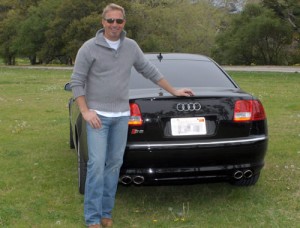
- 9. Brad Pitt and Angelina Jolie drive a BMW Hydrogen 7.
- 10. Jessica Simpson – Drives a white Escalade.
- 11. Julia Roberts – Drives a Toyota Prius.
- 12. Kevin Costner drives an Audi Q7 and Audi S8.
- 13. Matthew McConaughey drives a Lincoln MKX
- 14. Amy Winehouse drives a BMW 7 Series.
- 15. Kristen Cavallari – Drives a BMW 3 Series Coupe.
- 16. America Ferrera – Drives a Toyota Prius.
- 17. Nicole Richie and Joel Madden have a Bentley Continental.
- 18. Xzibit Drives a Lamborghini Gallardo.
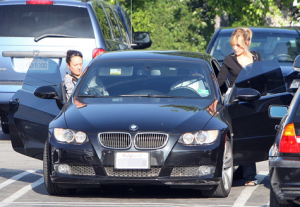
- 19. Jerry Seinfeld owns a whole bunch of Porches.
- 20. JaRule – Drives a lime green Lamborghini Murcielago and Maserati Spyder.
- 21. Samuel Jackson drives a Maybach 57 S
- 22. Leonardo DiCaprio – Owns a Toyota Prius.
- 23. Mary Kate Olsen drives a Porsche Cayenne.
- 24. Paris Hilton – Owns a Mercedes Benz SLR
- 25. Colin Farrell – Drives a black Ford Bronco.
- 26. Kirsten Dunst – Drives a trendy Toyota Prius.
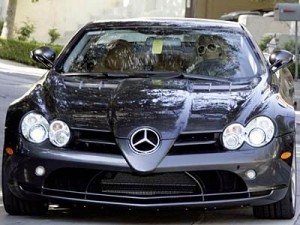
- 27. Justin Timberlake – Drives a white Jeep Wrangler Unlimited.
- 28. Kate Moss – Drives around London in her vintage MG.
- 29. Ice-T– Drives a red Bentley convertible.
- 30. Ryan Seacrest – Drives around in an Aston Martin.
- 31. Shaquille O’Neal – Owns an H2 and Rolls Royce Phantom among others.
- 32. Missy Elliott – Drives several cars including an Aston Martin V12 Vanquish, Rolls Royce Phantom and Lamborghini Gallardo.
- 33. Jeremy Piven – Drives a Ford Bronco.
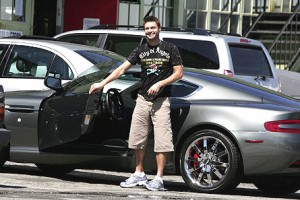
- 34. David Beckham – Drives a Cadillac Escalade.
- 35. Jim Carey – Drives a Mercedes S-Class.
- 36. Wyclef Jean – Drives a $350,000 Pagani Zonda C12-S, a Ferrari 360 Spyder, an F1 McLaren and a Mercedes G-500.
- 37. Josh Duhamel – Drives a Chrysler 300C SRT-8.
- 38. Seal drives a Ferrari.
- 39. Fergie – Owns an H2.
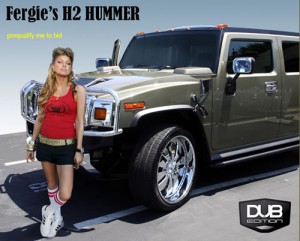
- 40. Madonna – Drives a Maybach 57.
- 41. Tom Cruise – Drives a Porsche 911.
- 42. Benji Madden – Owns a 1950 Ford Shoebox.
- 43. Tyra Banks – Drives a Lexus SC.
- 44. Kate Walsh – Drives a Range Rover Sport.
- 45. Britney Spears – Drives a Mercedes SLR McLaren and a CLK.
- 46. Pete Wentz – Drives a Range Rover.
- 47. Matthew Perry – Drives a Porsche convertible.
- 48. George Clooney – Drive the two seater electric Tango 600.
- 49. Kim Kardashian – Drives a Black Bentley Continental GTC.
- 50. Sienna Miller – Drives an Audi TT
Bonus List: Homage to Jay Leno
Jay Leno is perhaps the most thoroughly car-loving celebrity there’s ever been. Below we’ve included a collection of just some of his greatest vehicles:

Jay Leno’s Ariel Atom

Jay Leno’s Bentley Speed Six
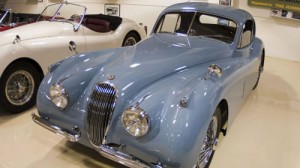
Jay Leno’s Jaguar XK120M
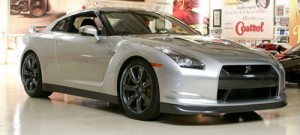
Leno’s 2009 Nissan GTR (This is #1 on our 2008 most lustable list.)
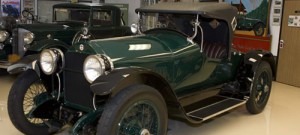
Jay Leno’s Stutz Bearcat
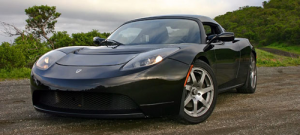
Jay Leno’s Tesla Roadster
At Improv Comedy Traffic School we see people from all walks of life… but even celebrities and their cars not immune to an occasional online traffic school sentence. We all can benefit from a little defensive driving refresher, especially if you are a driving 600 hp monster
Cell Phone Use While Driving: New Level of Fail
Ian Charles Mason, age 34 from Jamul California did not pay any attention to law enforcement officers who constantly advised him against distracted driving. As a worker from an
comedy traffic school, I warn everyone to refrain from using his cell phone while on the road. Due to the unheeded advice, Mason lost his stash of $121,860 and 55 pound bag of marijuana and was immediately sent to jail.
Fate was not on the good side of Mason on the 21st of September, when an officer observed Mason blatantly violating the California Vehicle Code rule by talking on his cell phone while driving. He was pulled over by Officer Campbell who noticed that Mason seemed to display signs of intoxication and subsequently arrested him for driving under the influence.
The vehicle was searched and it turned out that there were six plastic bags stored inside the trunk. These large bags contained 55 pounds of marijuana, each packed in a smaller one pound bag. The Humboldt County Drug Task Force was at once notified and they quickly responded. Officers also found Masons’ cash stash hidden below the rear seat of his vehicle. His cash and 55 pounds of marijuana were seized as asset forfeiture.
Everyone knows it’s illegal to carry marijuana for the intent of sale (without the proper medical licenses) but it’s another thing to get caught for it because of talking on your cell phone and driving. This is exactly what happened to Ian Charles Mason; he soon found himself sitting in the Humboldt County Jail. So, for those driving on roadways, refrain from using your cell phones while behind the wheel. I will try and drive that point home again and again here on our Defensive Driving Course website because especially in California drivers just do not seem to get the point.
New Data and Child Safety Seat Warnings
According to research carried out by the National Highway Traffic Safety Administration, it seems that fewer children died last year in roadway crashes. Yet, the Department of Transportation (DOT) is cautioning parents and caregivers alike to retain the use of child safety seats or booster seats. The data for child fatality point out that the leading cause of child death was vehicle crashes. From ages between three and fourteen, young children lost their lives and up to 490 were injured each day in 2009.
It is a known fact that child safety seats saves lives and parents and caregivers are encouraged to use this safety measure. Avoid graduating too quickly to booster seats or passenger belts, until the child is able to fit properly in both. Once your child outgrows their child safety seat, fit them into a booster seat which is the next level of vehicle safety precaution. Avoid fitting a child to a passenger belt until it fits properly, usually at the age of eight. It is better to remain in a booster seat until the passenger belt fits the child, resulting in fewer roadway deaths and injuries.
Leave no room for mistakes when it comes to the safety of the child every time, on every trip. As someone who works for a n online traffic school, I’m well aware of the significance of not leaving child safety measures to chance. Although we always try to drive home the importance of safe driving here on our comedy traffic school website, child safety is number one!
Worried About Rising Gas Prices? Be Prepared!
Unleaded regular’s hovering around $3 per gallon – which is high, but manageable. What if it goes back up to over $3 per gallon – or even $4 per gallon? Here are a few things to think about in the way of hedging your bets and insulating yourself and your family from the economic shocks that could very well be just around the corner:
Evaluate your fleet:
If you currently drive a gas-hungry vehicle, the time to consider replacing it with a more efficient one is before gas-hungry vehicles become virtually worthless overnight – as would happen if gas prices head south of $4 per gallon.
People who are driving 17 mpg SUVs and pick-ups when gas prices suddenly spike will be left holding the keys to vehicles almost no one else wants, either.
Meanwhile, it’ll be a seller’s market for fuel-efficient cars. Those who don’t have one will have to pay top dollar to get one.
Act pre-emotively and you’ll come out on top. Fail to act and you’ll be stuck with a vehicle that may cost $100 to fill-up that isn’t worth a third of what you paid for it.
If you absolutely must have a truck because of the work that you do or the area where you live, consider buying a diesel-powered pick-up to replace your gas-burning one. It’s true diesels cost more to buy – and the fuel is often more expensive than gas. But at $4 or $5 per gallon, the economics of owning a diesel truck that gets 30 mpg vs. a gas truck that’s in the teens back flips in your favor. Plus, a diesel-powered vehicle can last two or three times as long as an otherwise similar gas-powered vehicle. If you only have to buy a new vehicle once every ten or 12 years vs. once every eight or so, that’ll save you some bucks, too.
Pare down your fleet:
Some families have more vehicles than people. That’s fine, provided you can easily afford all those vehicles – and not just the cost to feed them fuel. People often forget all the peripheral costs of ownership, like insurance, taxes and, of course, necessary maintenance. If you keep multiple vehicles, the total costs can end up being quite high – even if you’re not actually driving the cars much.
If you can get by with two cars instead of three – or one car instead of two – the savings now can be considerable. And they’ll be even more so in a world of $4 gasoline.
Another savvy move is to cash out the equity you may have in excess vehicles. By selling off a surplus car or two, you can sock away several thousand dollars – which could come in very handy on the day that fuel prices rocket to a buck (or three) more per gallon than they are right now.
Investing in a low-bucks used economy car is another smart move. The glitter surrounding a new electric car or hybrid may be dazzling – but it’ll take many years to work off the cost ($41k for a new Chevy Volt) of buying one, even at $4 or $5 per gallon. A $4,000 used Corolla that gets 35 miles per gallon could ease the pinch of $50 fill-ups considerably.
Evaluate your job/where you work:
Many of us spend two hours (or more) every workday getting from home to our jobs and back home again. We bought into this because of the math. The lower cost of living in the ‘burbs offset the cost of fuel spent commuting, etc… Well, it used to.
But the equation changes when gas prices double or triple. All of a sudden, instead of spending $40 per week for fuel, you might be spending $80. For many families, the additional unexpected expense might be the straw that breaks the camel’s back. And there’s a double-whammy involved. Once gas prices sail past $4 per gallon, those far-flung suburban homes become less and less desirable – and their value falls.
This is already happening. But if we get to $4 or $5 fuel, the downturn in the housing market could become a collapse. Few people can afford a big mortgage – and $400 per month for gas on top of it.
So if you’re already close to the edge, money-wise, and know that a significant increase in your commuting costs could put extreme stress on your budget – begin thinking about options before a theoretical risk becomes an immediate crisis. Ask about telecommuting (if possible). Discuss ride-sharing with co-workers and friends. Maybe even consider moving closer to where you work. Once we get to $4 or $5 gas, your options will not be nearly as good as they are now.
Save elsewhere:
None of us can control the cost of fuel; if the sign says $4 per gallon and we need to fill up, that’s what we’ll pay. However, we do have control over other expenses. And we can compensate for increased energy costs by reducing what we spend on other things.
Many of us, for example, could easily get by without things like video cell phones and PDAs. Sure, electronic gadgets are fun – and handy. But the question should be: Are they necessary? And if the answer is “no” then the next question ought to be: Do I prefer having some money in the bank to cushion against possible upticks in energy costs (which can’t be evaded) or am I willing to risk being strapped for money if that happens in order to have the gadgets I want but don’t really need?
One last thing. Did you know that in most cases you can save money on your car insurance if you take an online traffic school class or defensive driving course? It works perfect for people with bad driving records and there are even comedy traffic schools online to make taking a class even easier. The more money you have in the bank – and the lower your monthly expenses for other things – the less $4 or even $5 per gallon fuel can hurt you.












 Live Chat
Live Chat



